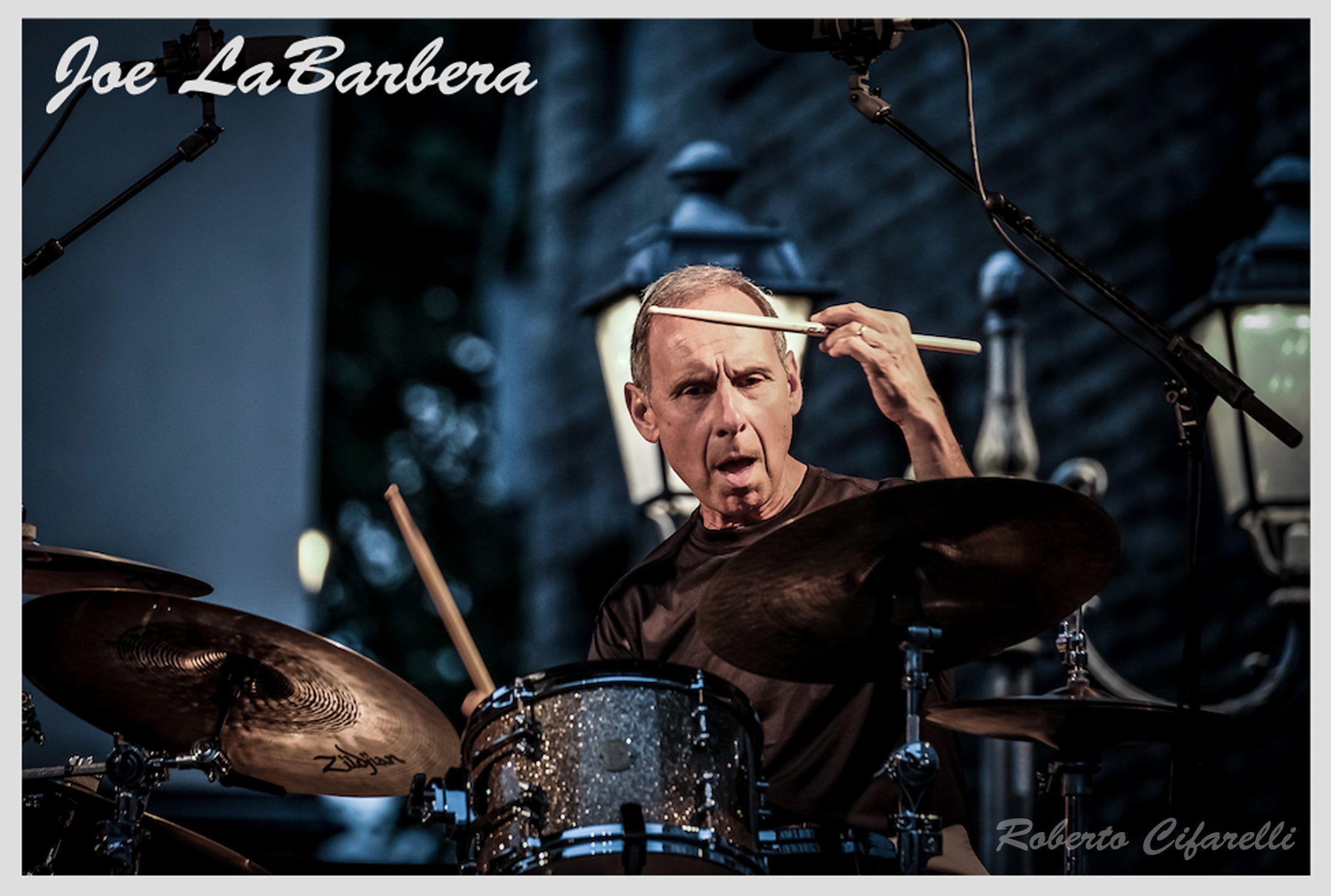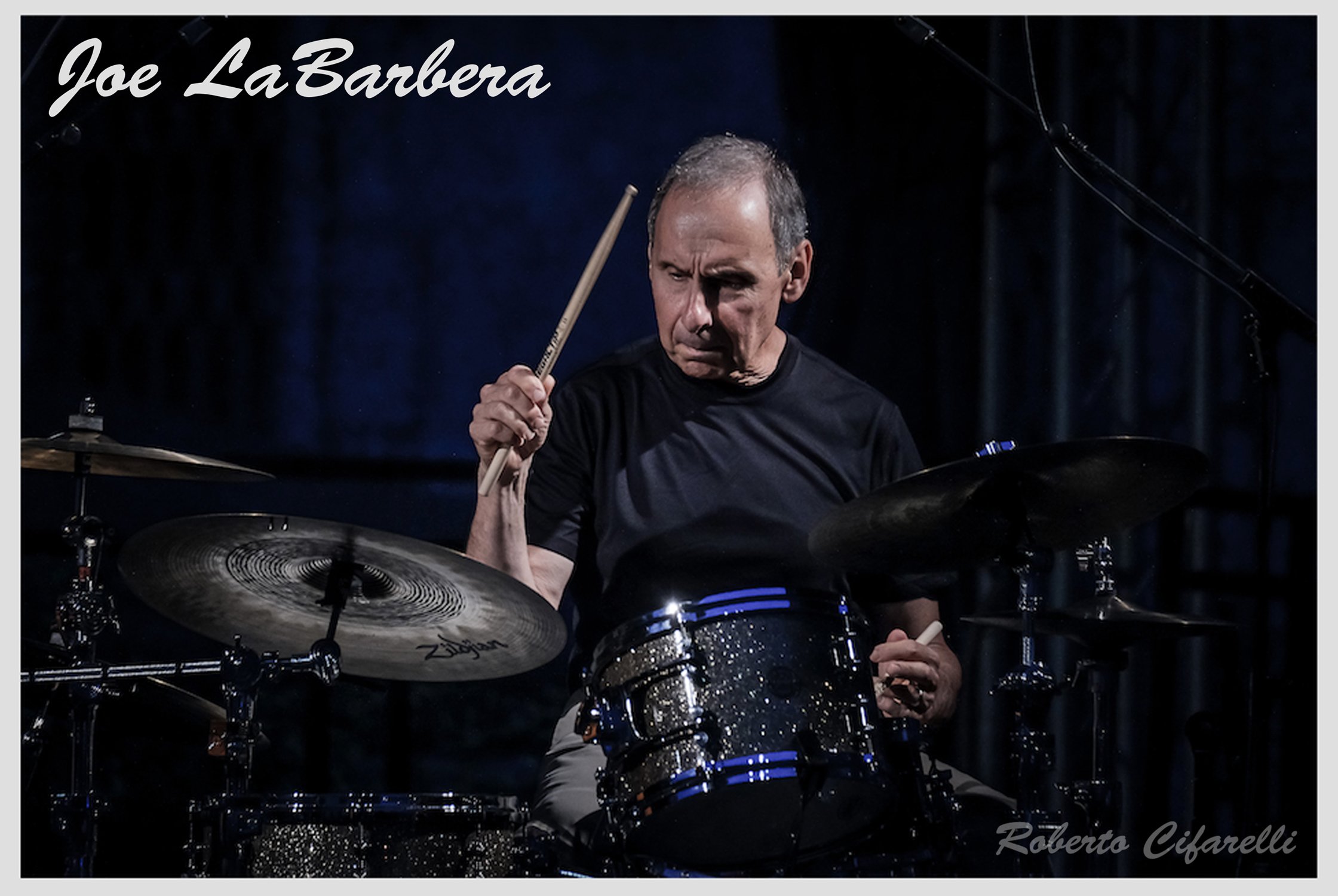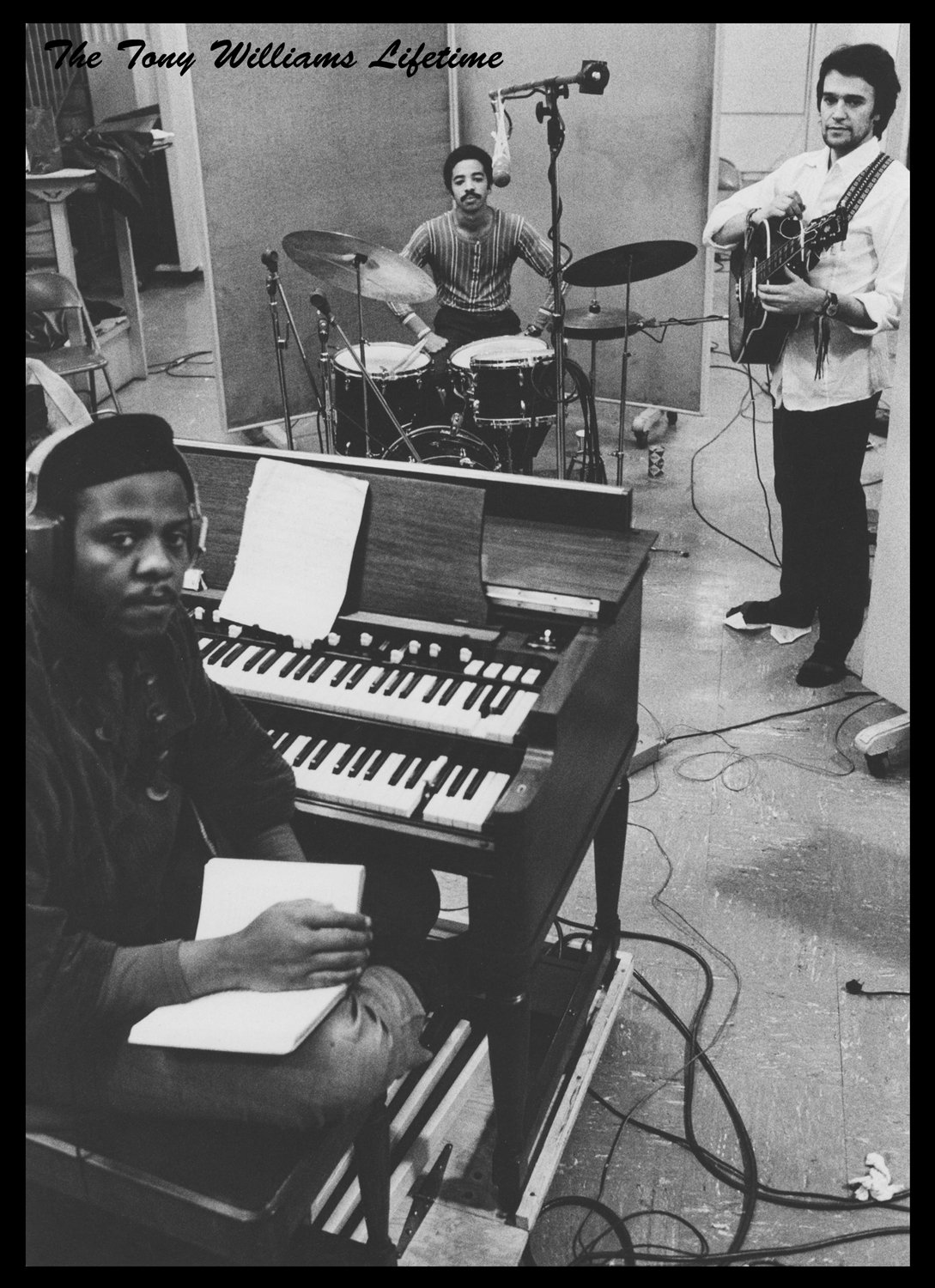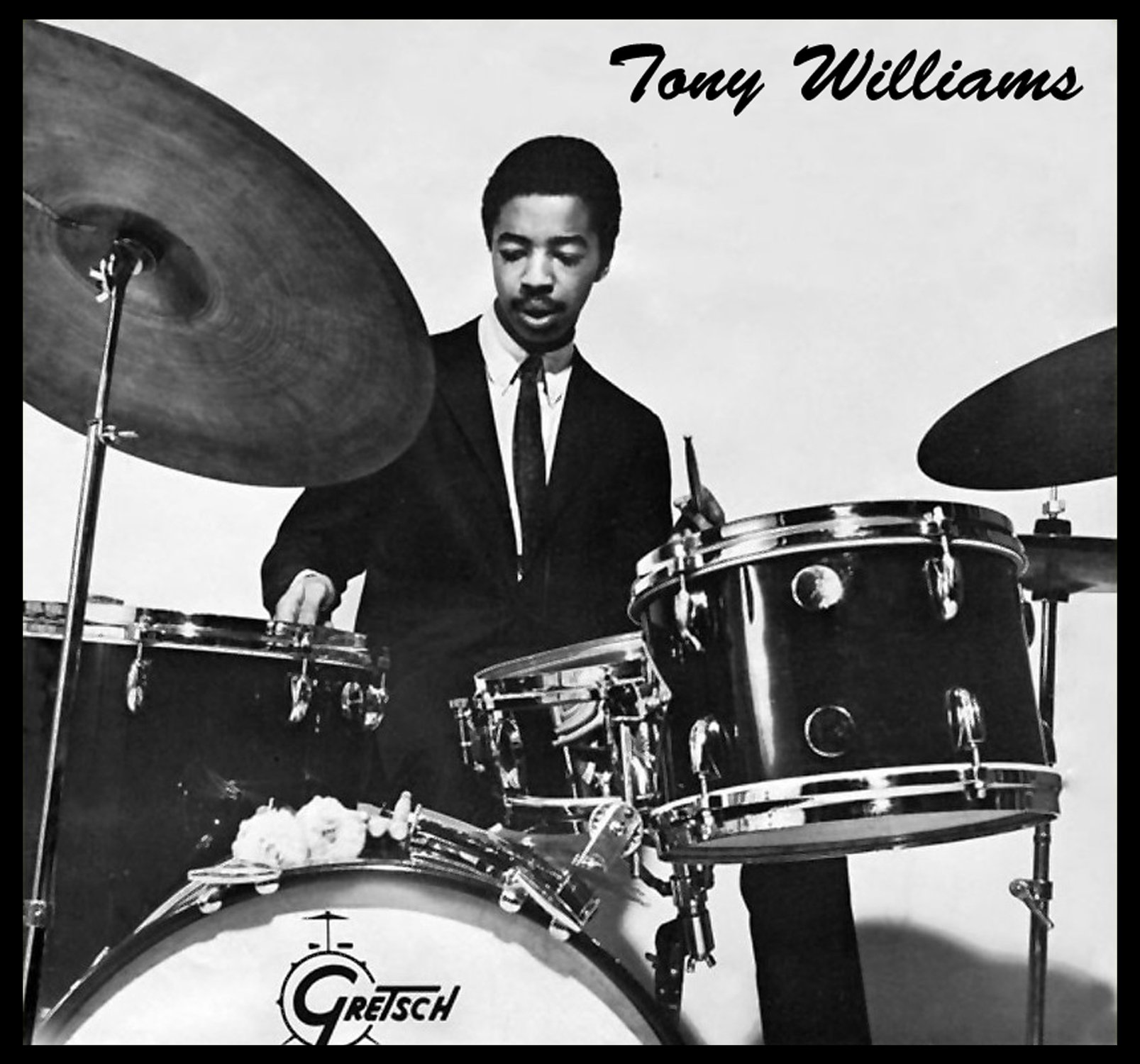By the time Tony Williams burst onto the scene in July of 1963 with the Miles Davis Quintet, he had already recorded two albums with Jackie McLean, One Step Beyond and Vertigo, as well as one with Kenny Dorham, the classic Una Mas. Jackie McLean had previously gone to Tony’s parents in Boston asking for permission to take the teenager to New York promising to keep a watchful eye on him. The rest, as they say, is history.
My first exposure to Tony was via the Columbia Records LP Miles in Europe which was recorded in July of 1963, just a few months after his first studio recording with Miles, Seven Steps to Heaven. Live in Europe features the quintet live at the Festival Mondial, du Jazz Antibes, France, and the musical growth in just a few months’ time (between the studio recording and this one) is astonishing. Tony’s concept was fresh, musical and exciting, like nothing I had ever heard before. He only has one extended solo on the blues, Walkin’, but that was enough to shake the jazz world. It certainly shook mine anyway. During this solo Tony breaks down the tempo and then proceeds to tell a story using his own unique ideas with incredible dramatic flair. Equally enlightening for me was the way he accompanied each soloist with just the right amount of tension/release and dynamic variety. Check out how he works with pianist Herbie Hancock during Herbie’s solo on Autumn Leaves or the 5 over 4 comp he and Herbie get into behind George Coleman midway through his solo on Walkin’. Miles gets Tony fired up during his solos as well, as in the call and response just before Tony’s solo on Walkin’. I got this record when I was 16 and it became a daily play along record for me, at first trying to copy what I heard Tony play, then trying to create my own responses.
I didn’t know much more about Tony Williams by the time I enrolled at Berklee College in Boston in September of 1966, but I did know that he had some lessons from Alan Dawson and Alan was the drum set instructor at Berklee, so I was very excited about the opportunity to learn from him. Anyone who was fortunate enough to have studied with Alan knows that he was a consummate drummer, an outstanding educator and a gentleman. I was truly privileged.
When Miles came to Boston to play Lennie’s on the Turnpike in 1967 my brothers and I were there. The band now included Wayne Shorter and Joe Henderson on tenors plus Eddie Gomez filling in for Ron Carter. Needless to say, they blew the walls down. At one point Tony had played so hard that Miles jokingly threw a towel at him to wipe his face. Also, during that week Alan invited Tony to give a masterclass at Berklee for some of his students. There were 4 or 5 of us in a small ensemble room as Alan asked Tony to demonstrate the styles of Max Roach, Art Blakey, Philly Joe Jones and Roy Haynes which he did beautifully. This was an eye opener for me because it was clear that he had spent a lot of time listening to and possibly seeing and hearing these greats live and had absorbed so much. But when he played with Miles, what you heard was a distillation of all of these greats into something truly unique.
The earlier recordings were just the beginning of Tony’s innovative drumming journey. When Miles’ quintet started to move away from the standard tune repertoire into more originals by Wayne Shorter primarily, but also from others, things started to change once again. ESP was another milestone recording that features a brilliant solo from Tony on the tune Agitation and more inventive comping from him as well. Subsequent recordings like Miles Smiles, Nerfertiti and Filles de Kilimanjaro all feature inspired drumming that changed the way a lot of us were playing at the time.
The next time I heard Tony was in New York in 1969 on a weekend pass from Fort Dix, New Jersey. He had left Miles and now had his own band, Lifetime, with John McLaughlin on guitar and Larry Young playing organ. This was completely new music inspired by not only Tony’s jazz roots but the rock music of the artists like Jimi Hendrix and Sly Stone. It was also closer to what Miles had been playing around the time Tony left the band. Both Miles in the Sky and Bitches Brew paved the way for Tony’s new band and many fusion bands of the next generation. Lifetime blew me away that night at a small club called Ungano somewhere in Manhattan, playing opposite B.B. King. Tony played so ferociously that he knocked over the cymbal on his left, but he just kept on playing.
I followed Tony’s career to its untimely conclusion on February 23 rd , 1997, exactly one year to the day from when Alan Dawson died, February 23 rd , 1996. Although my preference was for the years when he played the smaller Gretsch drum set, each era had something special to offer musically and, in each era, he continued to grow. Even today his recorded work sounds fresh to me, from the early Jackie McLean through Miles Davis to his own bands. To this day he is still an inspiration for me.
Joe La Barbera has been in demand by the greatest names in jazz for 5 decades. From his first professional appearance at the Sands Hotel in Las Vegas with Frankie Randall and the Buddy Rich band in 1968 to his work with jazz great Bill Evans and up to the present, he has always been regarded by his peers as a tasteful, musical drummer and a supportive accompanist. Bill Evans summed it up best when he said: “Joe is very dedicated to playing…he’s a top soloist and he does the right thing at the right time”.
Joe has worked with an impressive list of artists across generations and continents including Woody Herman, Chuck Mangione, John Scofield, Mike and Randy Brecker, Toots Thielemans, Lee Konitz, Joe Locke, John Abercrombie, Phil Woods, Bud Shank, Gary Burton, Dado Maroni, Enrico Pieranunzi, Brad Mehldau, Phillipe Catherine and Kenny Wheeler to name only a few.
He taught at the prestigious California Institute for the Arts for 28 years also appearing as a clinician and guest artist at many major universities around the world. After retiring in 2021 he was awarded Faculty Emeritus from Cal Arts. He is the recipient of the 2019 Jazz Treasure Award from the Los Angeles Jazz Society, Los Angeles County Museum of Art and the Board of Supervisors of Los Angeles County.
His book, Times Remembered The Final Years of the Bill Evans Trio published in 2021 has been praised by musicians and fans alike. His latest recording, World Travelers, the Joe La Barbera Quintet is recently released on Sam First Records.
Times Remembered: The Final Years of the Bill Evans Trio vol. 15: North Texas Lives of Musicians Series Joe La Barbera, Charles Levin — authors. https://untpress.unt.edu/catalog/labarbera-times-remembered/
World Travelers, the Joe La Barbera Quintet https://samfirstrecords.com/projects/experience/4/20/1
https://www.jerryjazzmusician.com/interview-with-joe-la-barbera-co-author-of-times-remembered-the-final-years-of-the-bill-evans-trio//






